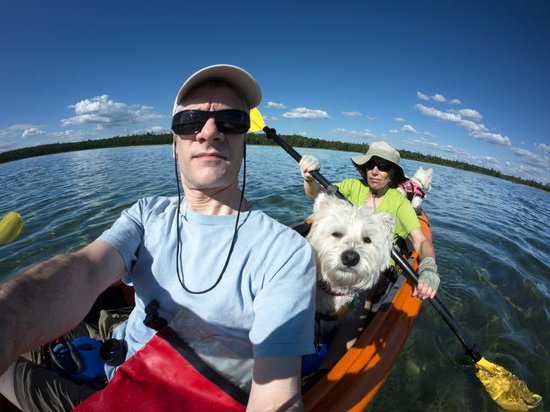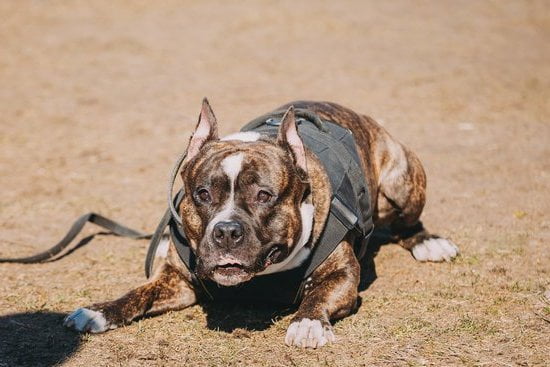Are you constantly wondering, “how can I train my dog to come when called?” Recall training is a crucial aspect of owning a dog, ensuring their safety and your peace of mind. In this article, we will explore the science behind recall training and provide practical tips for establishing a strong bond with your furry friend. From basic commands to advanced techniques, we will discuss the importance of consistency and patience in maintaining a successful recall training program.
Training your dog to come when called is not just about obedience; it’s about keeping them safe in various environments. Whether you’re at the park or on a busy street, having control over your dog’s behavior can prevent accidents and potentially dangerous situations. By understanding the importance of recall training, you can set the foundation for a harmonious relationship with your pet.
Throughout this article, we will delve into the science behind how dogs learn and respond to commands, as well as the common mistakes to avoid during recall training. By using positive reinforcement and implementing reward-based techniques, you can effectively teach your dog to come when called in any setting. Join us as we explore the fundamental principles of recall training and discover how consistency and patience play vital roles in its success.
The Science Behind Recall Training
Dogs have an incredible ability to learn and respond to commands, but understanding the science behind recall training can help dog owners effectively train their furry friends to come when called. When it comes to training dogs, it’s essential to understand how they learn and process information in order to achieve successful recall training.
One of the key factors in the science behind recall training is understanding the concept of conditioning. Dogs learn through conditioning, which means that they associate a specific behavior with a consequence. For example, when a dog comes when called and receives a treat or praise, they will begin to associate the command with a positive outcome. This strengthens the response and increases the likelihood of them obeying the command in the future.
Another important aspect of recall training is understanding canine communication and body language. Dogs rely heavily on body language and cues from their owners, so it’s crucial for dog owners to be aware of how their own actions and demeanor can influence their dog’s behavior. By paying attention to their dog’s body language and learning how to communicate effectively, owners can better understand how their dog learns and responds to commands.
To effectively train a dog to come when called, it’s important for owners to create a positive and rewarding experience for their furry companion. Using positive reinforcement techniques such as treats, toys, or verbal praise can help reinforce the desired behavior. By consistently rewarding their dog for coming when called, owners can strengthen the recall response and create a positive association with obeying commands.
- Understanding the concept of conditioning
- Learning about canine communication and body language
- Utilizing positive reinforcement techniques
Incorporating these principles into recall training can significantly improve a dog’s response to commands and strengthen the bond between owner and pet.
Establishing a Strong Bond With Your Dog
Building a strong bond with your dog is crucial for successful recall training. A strong bond creates trust and understanding between you and your dog, making it more likely that they will respond to your commands, including coming when called. Here are some ways you can strengthen the bond with your furry friend:
- Spend quality time together: Engage in activities that your dog enjoys, such as playtime, walks, and training sessions. This will help them associate positive experiences with being around you, strengthening the bond between you.
- Communicate effectively: Pay attention to your dog’s body language and vocal cues. Understanding their communication signals will help you build a stronger connection and develop a better understanding of each other.
- Provide care and support: Make sure to meet your dog’s physical and emotional needs. This includes providing a balanced diet, regular exercise, mental stimulation, and plenty of love and affection.
By creating a strong foundation based on trust and companionship, you’ll set the stage for successful recall training. When your dog feels secure in their relationship with you, they will be more inclined to listen and respond to your commands, including coming when called.
Ultimately, establishing a strong bond with your dog is not only beneficial for recall training but also for building a fulfilling and long-lasting relationship with your pet.
Starting With Basic Commands
When it comes to training your dog to come when called, starting with basic commands is crucial. Teaching your dog to sit, stay, and release are foundational skills that will set the stage for successful recall training. By mastering these commands, you are laying the groundwork for effective communication and obedience with your furry friend.
Introducing Sit, Stay, and Release
The “sit” command is a fundamental skill that teaches your dog to plant their bottom on the ground. It is an essential building block for recall training because it requires your dog to focus and listen to your instructions. The “stay” command teaches your dog to remain in a specific position until given a release signal.
This command helps create impulse control and reinforces self-discipline. Finally, the “release” command allows your dog to understand when they are free from their current position or task.
The Importance of Basic Commands in Recall Training
Mastering these basic commands is critical because they establish a level of respect and trust between you and your dog. When you ask your dog to come when called, having a solid foundation in sit, stay, and release will make it easier for them to understand and respond to your commands. These basic commands also help shape your dog’s behavior, teaching them patience and self-control.
Consistency Is Key
Consistency is key when teaching basic commands such as sit, stay, and release. Repetition and patience are vital in helping your dog grasp these fundamental skills. By practicing these commands daily in various environments, you are setting the stage for successful recall training down the line.
Remember that every interaction with your dog is an opportunity for training – whether it’s during playtime at home or on a walk in the park. With dedication and consistency, you can lay a solid groundwork for effective recall training.
Using Positive Reinforcement
Positive reinforcement is a key component of successful recall training for your dog. By using reward-based training techniques, you can effectively teach your dog to come when called in a variety of situations. This form of training relies on providing rewards, such as treats or praise, to encourage the desired behavior.
One effective way to use positive reinforcement in recall training is by giving your dog a high-value treat whenever they respond to the “come” command. This teaches them that coming when called results in a positive experience. It’s important to use treats that really motivate your dog and only provide them when they come to you promptly after being called.
In addition to treats, verbal praise and physical affection can also be used as forms of positive reinforcement. When your dog comes to you when called, shower them with praise, petting, and enthusiasm. This helps reinforce the behavior and makes it more likely that they will continue to come when called in the future.
| Positive Reinforcement | Reward-Based Techniques |
|---|---|
| Encourages desired behavior | Teach “come” command effectively |
| Use high-value treats | Verbally praise and provide affection |
Teaching Recall in Different Environments
Teaching your dog to come when called in different environments is an essential part of recall training. This section will provide you with tips and techniques to help your dog respond to your command no matter where you are.
First, it’s important to start recall training in a quiet and familiar environment. This could be your backyard or a peaceful park with minimal distractions. Begin by calling your dog’s name and using a positive, enthusiastic tone of voice. When they come to you, reward them with praise and their favorite treat. Gradually increase the distance between you and your dog as well as the level of distraction in the environment.
Once your dog has mastered recall in quiet settings, it’s time to practice in more challenging environments such as busier parks or even busy streets. Always ensure the safety of your dog during these training sessions, using a long leash if necessary. It’s important to remain patient and consistent during this process, as it may take some time for your dog to feel comfortable responding to your command in new environments.
In summary, teaching recall in different environments requires patience, consistency, and positive reinforcement. By gradually increasing the level of distraction while maintaining a strong bond with your dog, you can successfully train them to come when called no matter where you are.
| Training Environment | Tips |
|---|---|
| Quiet Park | Start with minimal distractions and gradually increase distance |
| Busy Streets | Use long leash for safety; Be patient and consistent |
Common Mistakes to Avoid
Using Negative Reinforcement
One common mistake to avoid when training your dog to come when called is using negative reinforcement. This includes scolding or punishing your dog when they do not respond to your recall command. Using negative reinforcement can create a negative association with the recall command, making it less likely for your dog to come when called in the future. Instead, focus on using positive reinforcement techniques to encourage and reward your dog for following the recall command.
Inconsistency
Another challenge in recall training is inconsistency. It’s important to be consistent with your training sessions, cues, and rewards. Inconsistent use of the recall command can confuse your dog and make it harder for them to understand what is expected of them. Additionally, inconsistency in rewarding your dog for coming when called can lead to uncertainty and lack of motivation for your dog to respond to the recall command.
Not Understanding Your Dog’s Behavior
Understanding your dog’s behavior is crucial in successful recall training. Each dog has different motivators and triggers that influence their behavior. It’s important to observe and understand what motivates your dog, whether it’s treats, toys, or praise. Additionally, understanding how your dog responds in different environments and situations can help you tailor your recall training techniques effectively.
By recognizing these common mistakes and challenges in recall training, you can better strategize how you approach teaching this important skill to your furry friend.
Troubleshooting
When your dog doesn’t come when called, it can be frustrating and even concerning. However, it’s important to approach this issue with patience and understanding. There are several common reasons why a dog may not respond to the recall command, and troubleshooting these issues can help improve their response in the future.
One common mistake that owners make when their dog doesn’t come when called is using a negative tone or punishment when the dog finally returns. This can create a negative association with the “come” command and make your dog even less likely to respond in the future. Instead, it’s important to remain calm and positive, even if it takes some time for your dog to return.
Another reason why your dog may not come when called is because they haven’t been properly trained in different environments. If you’ve only practiced recall in a quiet park, for example, your dog may struggle to respond in a busier or more distracting environment. To address this, gradually increase the level of distractions during training sessions to help your dog generalize the recall command across different settings.
It’s also important to consider any physical or medical issues that could be impacting your dog’s ability to come when called. If you notice a sudden change in their responsiveness, it may be worth scheduling a vet check-up to rule out any underlying health concerns that could be affecting their behavior. By addressing these potential issues and taking a patient, positive approach to training, you can work towards improving your dog’s recall response over time.
Advanced Recall Training Techniques
Once your dog has mastered the basics of recall training, you may want to take their training to the next level by introducing more advanced techniques. Advanced recall training is essential for ensuring that your dog responds reliably in any situation, even when distractions are present. This section will explore some advanced recall training techniques that can help you achieve a higher level of obedience and reliability in your dog’s response to the come command.
One effective technique for advanced recall training is known as “distance work.” This involves gradually increasing the distance between you and your dog when practicing the recall command. Start by calling your dog from a short distance, then gradually increase the distance as they become more proficient at responding. This helps to solidify their understanding of the command and reinforces their response over longer distances.
Another important aspect of advanced recall training is incorporating distractions into your training sessions. Introducing distractions such as other dogs, wildlife, or even food can help test and strengthen your dog’s response to the come command in real-world situations. By gradually exposing them to distractions during training, you can build their ability to focus on you and respond reliably regardless of what else is happening around them.
Additionally, incorporating off-leash training into your advanced recall training can be beneficial for reinforcing reliable behavior. This allows your dog to have more freedom while still responding to the come command without being physically restrained by a leash. However, it’s important to only practice off-leash training in safe and controlled environments until you are confident in your dog’s ability to respond consistently.
By implementing these advanced recall training techniques, you can further enhance your dog’s obedience and reliability in responding to the come command. These techniques require patience, consistency, and positive reinforcement to ensure success. Remember that every dog learns at their own pace, so it’s important to tailor your training approach to suit your individual pet’s needs and capabilities.
The Importance of Consistency and Patience
In conclusion, training your dog to come when called is an essential skill for their safety and your peace of mind. Consistency and patience are key to maintaining a successful recall training program. By understanding the importance of recall training and the science behind how dogs learn and respond to commands, you can establish a strong bond with your dog as the foundation for successful recall training.
Starting with basic commands such as sit, stay, and release, and using positive reinforcement techniques will help your dog understand what is expected of them when called. It’s also important to teach recall in different environments, from quiet parks to busy streets, to ensure that your dog responds reliably in any situation.
Avoiding common mistakes and understanding the challenges of recall training is crucial for troubleshooting when your dog doesn’t come when called. Additionally, advanced recall training techniques can take your dog’s skills to the next level. Remember that maintaining consistency and being patient with your training program is vital for long-term success. With dedication and perseverance, you can train your dog to come when called effectively.
Frequently Asked Questions
What Do You Do When Your Dog Won’t Come When Called?
When your dog won’t come when called, it’s important to first assess the situation. Is there a distraction that’s pulling their attention away?
If so, try calling them in a different tone of voice or using a different command. It’s also crucial to make coming to you a positive experience for your dog, so reward them with treats and praise when they do come.
How Long Does It Take to Train a Dog to Come When Called?
The time it takes to train a dog to come when called can vary depending on the individual dog and the consistency of training. Some dogs may pick up on the command quickly, while others may take more time.
It’s important to be patient and consistent with the training, as well as using positive reinforcement to encourage the desired behavior.
How Do You Catch a Dog That Won’t Come to You?
Catching a dog that won’t come to you can be challenging, especially if they are distracted or fearful. One approach is to get down on their level and use inviting body language, such as crouching down and holding out your hand. Avoid chasing after them, as this may cause them to run further away.
Using treats or their favorite toy can also help entice them to come closer. If all else fails, seeking professional help from a dog trainer may be necessary for difficult cases.

Welcome to the blog! I am a professional dog trainer and have been working with dogs for many years. In this blog, I will be discussing various topics related to dog training, including tips, tricks, and advice. I hope you find this information helpful and informative. Thanks for reading!





